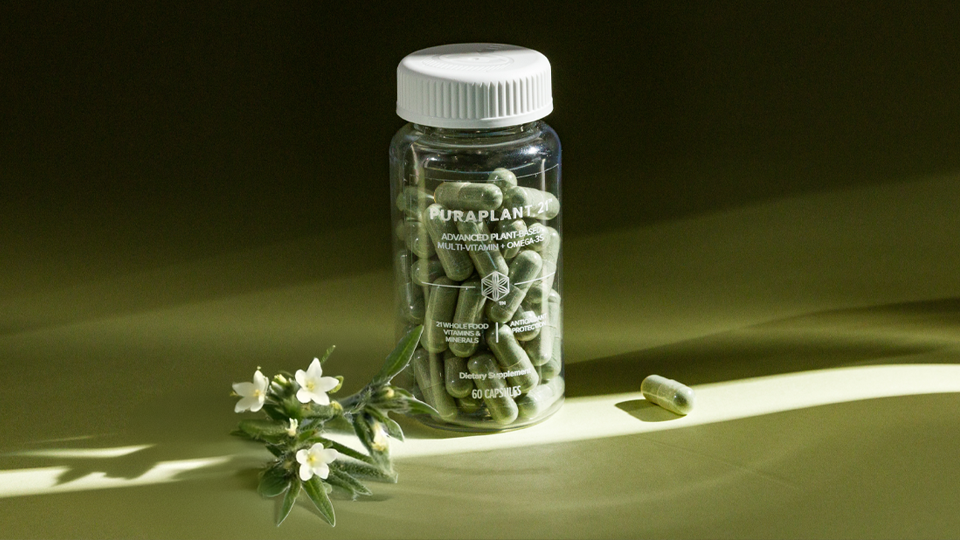When it comes to the topic of health and nutrition, you can’t believe everything you read online. Inaccurate and misleading information is everywhere, especially in articles and social media posts that single out ingredients found in common foods as “hidden risks” to your health.
Readers are right to be skeptical of these baseless claims. This skepticism has caused health-conscious people to request more information about the ingredients in their favorite foods and dietary supplements. We’re breaking down the science to answer your top ingredient questions.
Carrageenan
Food-grade carrageenan is sourced naturally from seaweed and acts as a thickener in yogurts and bar coatings. It’s typically used in small amounts to help improve texture and is considered safe since it is a type of dietary fiber not absorbed by the body.
In a 2019 scientific review, it was found that research literature confused some readers by using the term “carrageenan” to describe poligeenan (“degraded carrageenan”). This nonfood sulfated polygalactan material has been linked to gastrointestinal lesions, inflammation, and tumors (1). This miscommunication in terminology likely started the controversy surrounding carrageenan.
This same review also notes that research on carrageenan shows that it is safe in foods and may even have potential health benefits (1). As more carrageenan studies show positive and safe results in foods and supplements, more companies are looking to carrageenan to help improve their formulations, including those for infant formulas (2).
Sodium benzoate
Sodium benzoate is the salt of benzoic acid, an organic acid found naturally in apples, berries, cranberries, and cinnamon. The Food and Drug Administration has extensively studied the safety of sodium benzoate and has found it safe in the amounts used in typical American diets.
It’s important to note that sodium benzoate is not the same as benzene, a known carcinogen. In a 2005 study conducted by the FDA, over 200 products containing sodium benzoate were tested for benzene. Most contained no detectable amounts of benzene unless sodium benzoate was naturally occurring or combined with ascorbic acid (3).
Preservatives like sodium benzoate are targets of criticism despite their well-established safety profiles. For example, long-term studies have shown no health problems associated with sodium benzoate in the concentrations used in our products (3). The ingredient is included because it prevents spoilage and extends shelf life in liquid products.
Proprietary blends
Think of a proprietary blend as a secret family recipe — no one makes it quite like your family! When friends or colleagues ask you for the recipe, you simply tell them what the ingredients are instead of divulging all the details.
Proprietary blends work similarly. The dietary supplement industry uses them to market exclusive blends of active ingredients that are unique to a company or product. However, proprietary blends often get a bad reputation.
Online critics accuse proprietary blends of hiding ingredients and not using efficacious amounts. These accusations are easily disproven because proprietary blends must follow U.S. dietary labeling guidelines. The FDA requires that all active ingredients in a proprietary blend be listed in descending order by weight (4).
Propriety blends provide ingredient information along with serving amounts. They also have unique names to help consumers understand the magic behind the product.
Digestion-resistant maltodextrin
It’s not uncommon for consumers to confuse maltodextrin with digestion-resistant maltodextrin. Although both are sourced from a variety of vegetables, including tapioca and corn, maltodextrin is a simple carbohydrate used to provide a creamier texture in products.
By contrast, digestion-resistant maltodextrin is a type of prebiotic dietary fiber that offers several benefits for digestive wellness. Digestion-resistant maltodextrin is not digested or absorbed — it passes through the digestive tract, supporting probiotic microbes in the gut along the way (5). Researchers have found that digestion-resistant maltodextrin may improve feelings of satiety and promote regularity (6, 7).
IsaLean® Shake and other Isagenix products are made with digestion-resistant maltodextrin sourced from non-GMO ingredients.
Sunflower oil
The sunflower oil in Whole Blend IsaLean Shake and IsaLean Shake is a high–oleic acid (omega-9) sunflower oil that is largely composed of monounsaturated fat. Research shows that diets rich in monounsaturated fat may have a variety of health benefits (8). Other types of sunflower oils are high in linoleic and mid-oleic acids, which are higher in omega-6s, essential fatty acids that are crucial to body function when eaten in balance with omega-3s.
It’s important to note that linoleic and mid-oleic acid sunflower oils are more commonly used in household cooking and are higher in polyunsaturated fat. Much of the concern around sunflower oil comes from the aldehyde production during high-heat cooking with polyunsaturated oils, which may negatively impact health (9).
Finding your way through food labels is rapidly becoming an art form. With new ingredient names and new research released every day, staying on top of what is in your food is practically a full-time job. Isagenix is firmly committed to high–quality foods and supplements to nourish your body and enhance your wellbeing. Whether your goal is weight loss, body sculpting, or graceful aging, Isagenix is here to help.
References
- McKim JM, Willoughby Sr JA, Blakemore WR, Weiner ML. Clarifying the confusion between poligeenan, degraded carrageenan, and carrageenan: A review of the chemistry, nomenclature, and in vivo toxicology by the oral route. Critical reviews in food science and nutrition. 2019 Oct 28;59(19):3054-73.
- Bixler HJ. The carrageenan controversy. Journal of Applied Phycology. 2017 Oct;29(5):2201-7.
- US Food and Drug Administration. Data on Benzene in Soft Drinks and Other Beverages. 2007.
- Code of Federal Regulations: 21 CFR Sect. 101.36 (2020).
- Lefranc-Millot C, Guérin-Deremaux L, Wils D, Neut C, Miller LE, Saniez-Degrave MH. Impact of a resistant dextrin on intestinal ecology: how altering the digestive ecosystem with NUTRIOSE®, a soluble fibre with prebiotic properties, may be beneficial for health. J Int Med Res. 2012;40(1):211-24. doi: 10.1177/147323001204000122. PMID: 22429361.
- Ye Z, Arumugam V, Haugabrooks E, Williamson P, Hendrich S. Soluble dietary fiber (Fibersol-2) decreased hunger and increased satiety hormones in humans when ingested with a meal. Nutr Res. 2015 May;35(5):393-400. doi: 10.1016/j.nutres.2015.03.004. Epub 2015 Mar 18. PMID: 25823991.
- Hashizume C, Okuma K. Fibersol®-2 resistant Maltodextrin: Functional Dietary Fiber Ingredient. Fiber Ingredients–Foods Applications and Health Benefits. CRC Press, Boca Raton, FL, USA. 2009 Jun 18:61-78.
- Allman-Farinelli MA, Gomes K, Favaloro EJ, Petocz P. A diet rich in high-oleic-acid sunflower oil favorably alters low-density lipoprotein cholesterol, triglycerides, and factor VII coagulant activity. J Am Diet Assoc. 2005 Jul;105(7):1071-9.
- Peng CY, Lan CH, Lin PC, Kuo YC. Effects of cooking method, cooking oil, and food type on aldehyde emissions in cooking oil fumes. J Hazard Mater. 2017 Feb 15;324(Pt B):160-167.





